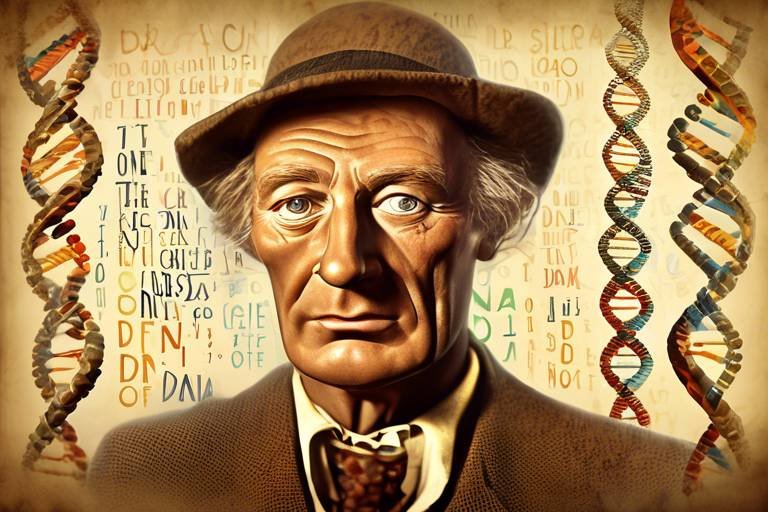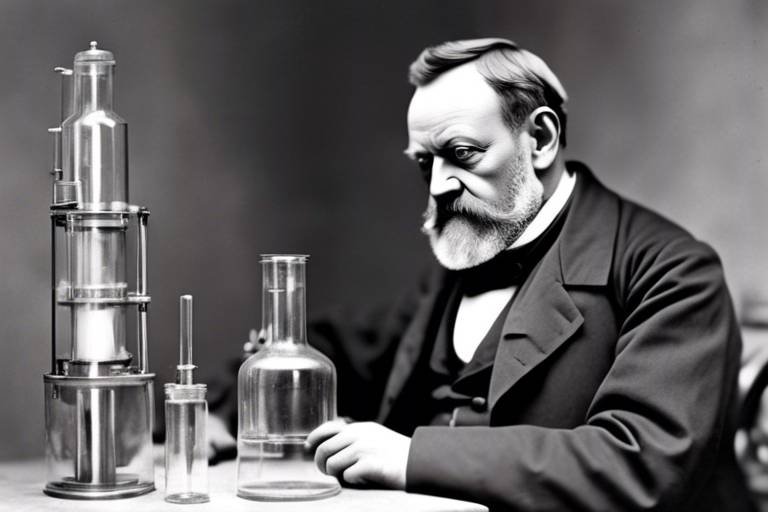Crick: The Discoverer of DNA Structure
Francis Crick, a brilliant scientist whose name is synonymous with the groundbreaking discovery of the structure of DNA, stands as a towering figure in the annals of genetics and molecular biology. His relentless pursuit of unraveling the mysteries of life's blueprint led to a paradigm shift in our understanding of genetic information and laid the foundation for modern biotechnology.
From his humble beginnings in Northampton, England, Crick displayed a keen interest in science from an early age. His academic journey took him to the University of London and later to the University of Cambridge, where he honed his research skills and embarked on a scientific odyssey that would change the course of history.
Collaborating closely with the young American biologist James Watson, Crick embarked on a scientific adventure that would culminate in the elucidation of the double helix structure of DNA. Their partnership was marked by intense intellectual exchange, innovative thinking, and a shared vision to unlock the secrets of life encoded in the DNA molecule.
Through a series of key experiments and groundbreaking findings, including the analysis of X-ray crystallography data, Crick and Watson pieced together the intricate structure of DNA, revealing its elegant double helical nature. This revelation not only revolutionized the field of biology but also provided a blueprint for understanding the mechanisms of heredity and genetic inheritance.
The impact of Crick's discovery reverberates through the corridors of genetics and medicine to this day. His work paved the way for advancements in genetic research, the development of gene therapies, and a deeper understanding of hereditary diseases. The double helix structure of DNA remains a cornerstone of modern biology, shaping our understanding of life at the molecular level.
In 1962, Crick, Watson, and Maurice Wilkins were awarded the Nobel Prize in Physiology or Medicine for their groundbreaking discovery of the DNA structure. This prestigious recognition underscored the profound impact of their work on the scientific community and solidified their place in history as pioneers of molecular biology.
Following the DNA discovery, Crick continued to push the boundaries of scientific inquiry, shifting his focus to the field of neuroscience. His research on the nature of consciousness and the neural basis of perception reflected his insatiable curiosity and unwavering commitment to unraveling the mysteries of the human mind.
Crick's scientific philosophy, characterized by bold hypotheses, interdisciplinary collaboration, and a relentless pursuit of truth, continues to inspire generations of scientists. His legacy as a visionary thinker and mentor endures, shaping the trajectory of scientific exploration and challenging future generations to push the boundaries of knowledge.

Early Life and Education
Francis Crick, the renowned scientist behind the discovery of the DNA structure, had a fascinating early life that laid the groundwork for his groundbreaking contributions to the field of genetics. Born on June 8, 1916, in Northampton, England, Crick showed an early interest in science and mathematics, displaying a curious and inquisitive nature from a young age. His upbringing in a family that valued education and intellectual pursuits nurtured his passion for exploration and discovery.
After completing his primary education, Crick pursued a degree in physics at University College London, where he developed a keen interest in biophysics. His academic journey took a significant turn when he joined the Admiralty Research Laboratory during World War II, where he worked on the development of magnetic and acoustic mines, honing his analytical skills and scientific acumen.
Following the war, Crick's insatiable thirst for knowledge led him to pursue a Ph.D. in biophysics at the University of Cambridge, where he delved into the emerging field of molecular biology. It was during his time at Cambridge that Crick's path intersected with that of James Watson, sparking a collaboration that would change the course of scientific history.
Throughout his early career, Crick demonstrated a remarkable ability to think outside the box, approaching scientific problems with a fresh perspective and a willingness to challenge conventional wisdom. His interdisciplinary background in physics and biology equipped him with a unique set of skills that would prove instrumental in unraveling the mysteries of the genetic code.

Collaboration with Watson
Francis Crick's collaboration with James Watson was a pivotal partnership that reshaped the landscape of molecular biology. The duo's shared research journey began at the Cavendish Laboratory in Cambridge, where their complementary expertise and innovative thinking converged to unlock the secrets of DNA. Watson, a young American biologist, and Crick, an established British physicist, formed a dynamic duo that would go on to unravel the mysteries of the genetic code.
The collaborative efforts between Crick and Watson were characterized by intense intellectual exchange and relentless pursuit of scientific truth. Their partnership was marked by a fusion of theoretical insight and experimental ingenuity, with each scientist pushing the other to new heights of discovery. Together, they embarked on a quest to decipher the structure of DNA, a quest that would ultimately culminate in one of the most significant breakthroughs in the history of science.
Central to their collaboration was the famous model-building exercise in which Crick and Watson pieced together the double helix structure of DNA using cardboard cutouts. This creative approach, combined with their deep understanding of molecular forces and chemical bonds, allowed them to propose a molecular model that elegantly explained the genetic code's replication and transmission mechanisms.
Moreover, Crick and Watson's collaboration extended beyond the confines of the laboratory, as they engaged in lively debates, shared insights, and challenged each other's assumptions. Their partnership exemplified the power of teamwork in scientific inquiry, demonstrating how collaboration and cooperation can lead to groundbreaking discoveries that transcend individual brilliance.

Key Experiments and Findings
One of the key experiments that played a pivotal role in the discovery of the DNA structure was the utilization of X-ray crystallography analysis by Francis Crick and James Watson. This groundbreaking technique allowed them to obtain crucial insights into the molecular arrangement of DNA, revealing its iconic double helix structure. By analyzing the diffraction patterns produced by DNA crystals under X-ray beams, Crick and Watson were able to deduce the precise spatial arrangement of the nucleotide bases along the sugar-phosphate backbone, providing a fundamental understanding of the genetic material's architecture.
Furthermore, another significant finding that emerged from their collaborative research was the complementary base pairing within the DNA molecule. Through meticulous experimentation and analysis, Crick and Watson discovered the specific hydrogen bonding patterns between adenine and thymine, as well as guanine and cytosine, elucidating the mechanism of genetic information storage and replication. This discovery not only unveiled the elegant simplicity of the genetic code but also laid the groundwork for future studies in molecular biology and genetics.

Impact on Genetics and Medicine
Francis Crick's discovery of the DNA structure had a profound impact on the fields of genetics and medicine, ushering in a new era of scientific understanding and innovation. By unraveling the double helix structure of DNA alongside James Watson, Crick's work laid the foundation for a multitude of advancements in genetic research and medical treatments.
The elucidation of the DNA structure not only provided insights into the mechanisms of heredity and genetic inheritance but also paved the way for the development of new therapies and diagnostic tools. Scientists were able to better understand how genetic information is encoded and transmitted, leading to significant breakthroughs in the treatment of hereditary diseases and genetic disorders.
Furthermore, Crick's discovery revolutionized the field of molecular biology, offering a blueprint for researchers to explore the complexities of the genetic code and its implications for human health. The identification of the DNA structure enabled scientists to decipher the genetic basis of various diseases, opening up possibilities for targeted therapies and personalized medicine.
Through his groundbreaking work, Francis Crick not only reshaped our understanding of genetics but also inspired generations of scientists to delve deeper into the intricacies of the genetic code. His contributions continue to resonate in the field of genetics and medicine, driving ongoing research efforts to unlock the mysteries of the human genome and improve healthcare outcomes.

Nobel Prize Recognition
Francis Crick, along with his research partner James Watson and scientist Maurice Wilkins, was awarded the prestigious Nobel Prize in Physiology or Medicine in 1962. This esteemed recognition was bestowed upon them for their groundbreaking discovery of the double helix structure of DNA, a monumental achievement that revolutionized the field of molecular biology. The Nobel Prize acknowledgment solidified Crick and Watson's place in scientific history, honoring their exceptional contributions to unraveling the mysteries of genetic code and DNA structure.

Later Career and Legacy
After the groundbreaking discovery of the DNA structure, Francis Crick's career took a new trajectory, leading him to delve into the realm of neuroscience. His insatiable curiosity and thirst for knowledge drove him to explore the mysteries of the human brain, shifting his focus from genetics to the complexities of the mind. Crick's later career was marked by his pioneering research in neuroscience, where he made significant contributions to understanding the neural basis of consciousness and perception.
Despite transitioning to a different field of study, Crick's legacy continued to inspire and influence the scientific community. His innovative approach to scientific inquiry, characterized by bold hypotheses and rigorous experimentation, set a high standard for future researchers to follow. Crick's mentorship of young scientists further solidified his impact, as he nurtured the next generation of innovators and instilled in them his passion for pushing the boundaries of knowledge.
Throughout his later career, Crick remained dedicated to advancing scientific understanding, pushing the boundaries of human knowledge, and challenging conventional wisdom. His legacy as a trailblazer in both genetics and neuroscience endures, serving as a guiding light for aspiring scientists seeking to make their mark on the world of research and discovery.

Scientific Philosophy and Influence
Francis Crick's scientific philosophy and influence extended far beyond his groundbreaking discovery of the DNA structure. His innovative thinking and bold ideas continue to inspire generations of scientists and shape the course of scientific inquiry. Crick was not only interested in unraveling the mysteries of genetics and molecular biology but also delved into the realm of neuroscience, exploring the complexities of the human brain.
One of Crick's most notable contributions to scientific philosophy was his exploration of the nature of consciousness. He pondered questions that pushed the boundaries of traditional scientific inquiry, challenging the status quo and encouraging others to think beyond conventional wisdom. His willingness to explore unconventional ideas and embrace the unknown paved the way for new avenues of research and discovery.
Throughout his career, Crick emphasized the importance of collaboration and interdisciplinary approaches in scientific endeavors. He believed that true innovation stemmed from the exchange of ideas and perspectives, fostering a rich intellectual environment where creativity could flourish. By engaging with researchers from diverse fields, Crick broadened his own horizons and catalyzed new discoveries that transcended disciplinary boundaries.
Crick's influence on the scientific community was profound, leaving a lasting legacy that continues to shape the landscape of modern science. His commitment to rigorous inquiry, bold exploration, and intellectual curiosity serves as a beacon for aspiring scientists, urging them to push the boundaries of knowledge and embrace the unknown with courage and conviction.
Frequently Asked Questions
- Who is Francis Crick?
Francis Crick was a renowned British molecular biologist who, along with James Watson, made significant contributions to the discovery of the structure of DNA. His groundbreaking work revolutionized the field of genetics and molecular biology.
- What was the key discovery made by Crick and Watson?
Crick and Watson are best known for their elucidation of the double helix structure of DNA, a fundamental breakthrough in understanding the molecular basis of heredity. This discovery laid the foundation for modern genetics and has had a profound impact on scientific research.
- How did Crick's collaboration with Watson influence their research?
The partnership between Crick and Watson was marked by intense collaboration and shared intellectual pursuits. Their combined efforts, along with the support of other scientists, enabled them to unravel the complex structure of DNA through innovative experimentation and analysis.
- What was the significance of Crick's Nobel Prize recognition?
Francis Crick, James Watson, and Maurice Wilkins were jointly awarded the Nobel Prize in Physiology or Medicine in 1962 for their groundbreaking discovery of the DNA structure. This prestigious recognition solidified their place in scientific history and highlighted the importance of their contributions to the field.
- How did Crick's scientific philosophy influence his work?
Crick's scientific philosophy was characterized by a deep curiosity about the mysteries of life and a relentless pursuit of knowledge. His innovative thinking, particularly in the realm of neuroscience and consciousness, continues to inspire scientific inquiry and shape the way we approach complex biological questions.



















